Paper:Transient Flow Field Behavior after End of Spray Injection Under Different Injection and Flash Boiling Conditions
The paper is now available online at 10.4271/2023-32-0092
Paper Info
Date: September 2023
DOI: 10.4271/2023-32-0092
Conference: 2023 JSAE/SAE Powertrains, Energy and Lubricants International Meeting
At: Kyoto, Japan
Authors: Ziming Zhou, Fengnian Zhao*, David L.S. Hung, Xuesong Li, Min Xu
Main Content
Recently, undergraduate student Ziming Zhou (author) presented a paper at the International Conference on Powertrains, Energy and Lubricants organized by the Society of Automotive Engineers (SAE). The paper, titled “Transient Flow Field Behavior after End of Spray Injection Under Different Injection and Flash Boiling Conditions,” utilized fluorescent particle image velocimetry and Mie scattering techniques to analyze the transient behavior of the ambient flow field after fuel spray injection. The study revealed the correlation between spray residual effects and vortex intensity. Ziming Zhou is the primary author of the paper, and Dr. Fengnian Zhao, a postdoctoral researcher, is the corresponding author.
Improving engine efficiency is a crucial pathway to achieving national goals of “peak carbon” and “carbon neutrality.” With increasing attention on energy conservation and emissions reduction, the efficiency of combustion engines has become a focal point in the energy and automotive industries. The non-uniform mixing of fuel and air often leads to incomplete combustion and increased pollutant generation. Therefore, understanding the mixing mechanisms of fuel and air inside the cylinder under different conditions is essential.
During the fuel injection phase inside the cylinder, large-scale vortices in the flow field primarily result from the shear forces generated by the downward high-speed motion of the spray jet. Conversely, during the tail end of fuel injection, the behavior of the ambient flow field is more influenced by local airflows, such as small vortices generated by the disturbance of residual spray droplets. Quantifying the strength of residual effects can further reveal the interaction mechanisms between residual fuel droplets and the airflow in the environment. Addressing this issue, under the guidance of Professor Lingxun Kong, Ziming Zhou used fluorescent particle image velocimetry and systematic flow field analysis methods to study the residual effects of fuel injection on the ambient flow field during the end of the injection phase. The study explored the correlation between spray duration, injection pressure, and spray flash boiling level, revealing the relationship between vortex intensity, residual effects, and the ambient flow field.
Outline of this work
Section 1: Introduction
The introduction section of the document discusses the increasing attention given to the efficiency of combustion engines in the context of energy conservation and emission reductions. It highlights the use of Gasoline Direct-Injection (GDI) technology in optimizing engine combustion for improved fuel economy and lower emissions. However, the complexity of the GDI process in terms of fuel-air mixing strategies and the potential for incomplete combustion with increased pollutant formations necessitate a thorough understanding of the mixing mechanism of fuel and air in the cylinder under different experimental conditions .
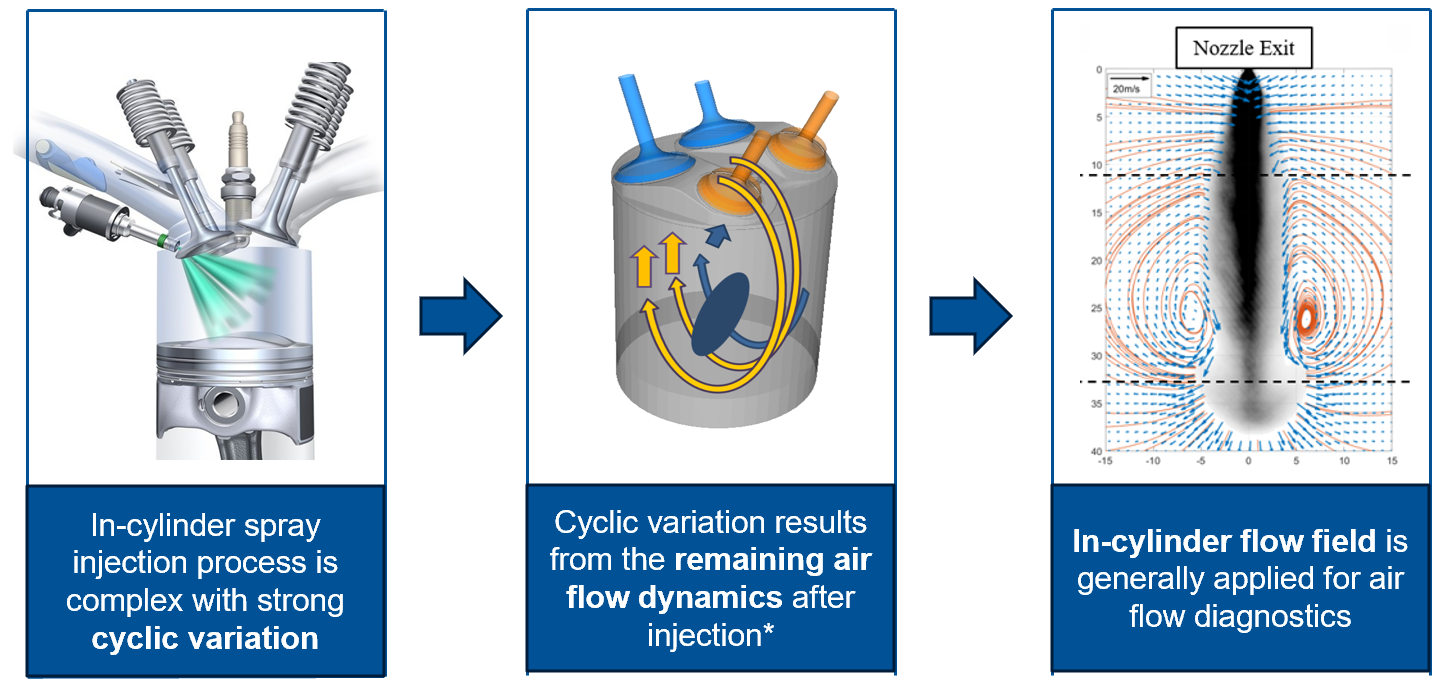
The after-injection residual effect is a significant aspect addressed in the introduction. It refers to the residual impact of spray injection on ambient flow fields after the end of the injection process. This residual effect is characterized by the persistence of fuel droplets in the surrounding medium after the dispersion of the residual droplets into the ambient air. The document emphasizes the need for a systematic study to reveal the physics of the fuel spray-induced air flow behavior after the end of spray injection, as this aspect has not been sufficiently reported in existing literature .
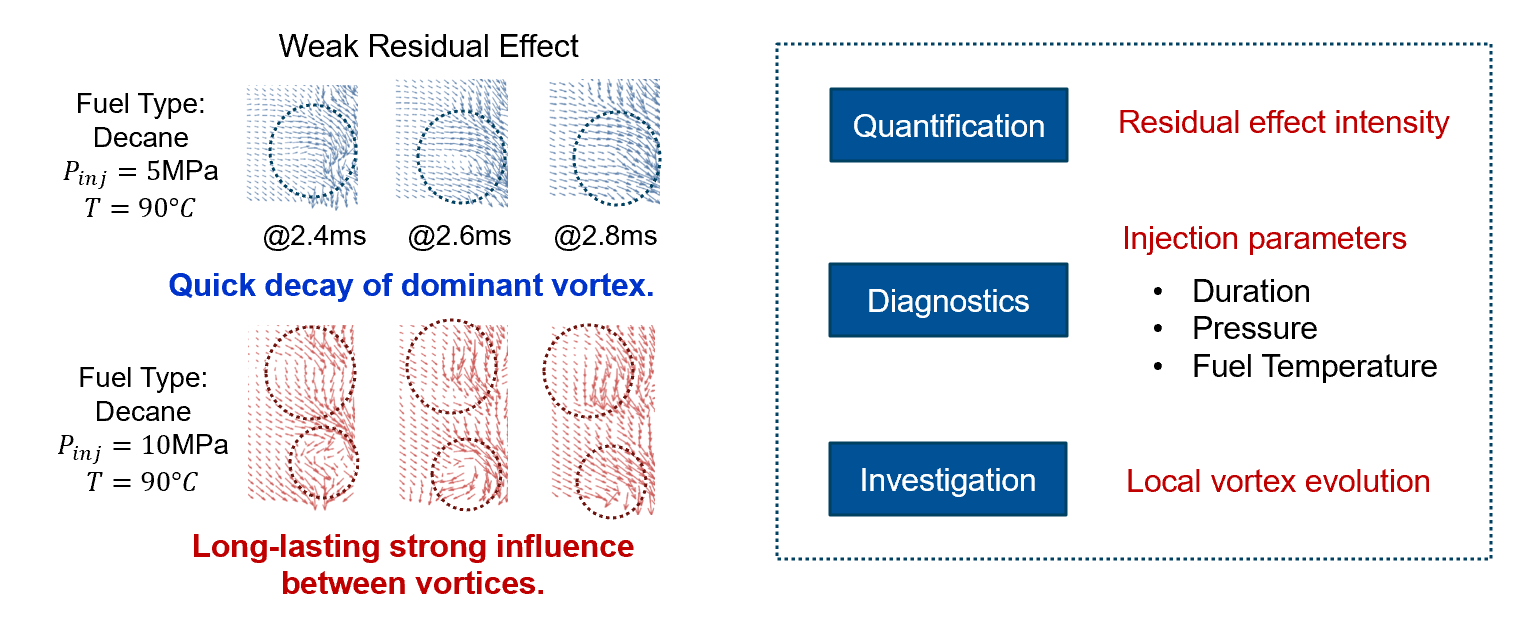
Section 2: Experimental Setup
This section describes the hardware and instrumentation used in the experiment, including the constant volume chamber, nitrogen bottle, vacuum pump, water bath, custom-made two-hole GDI injector, and tracing particle.
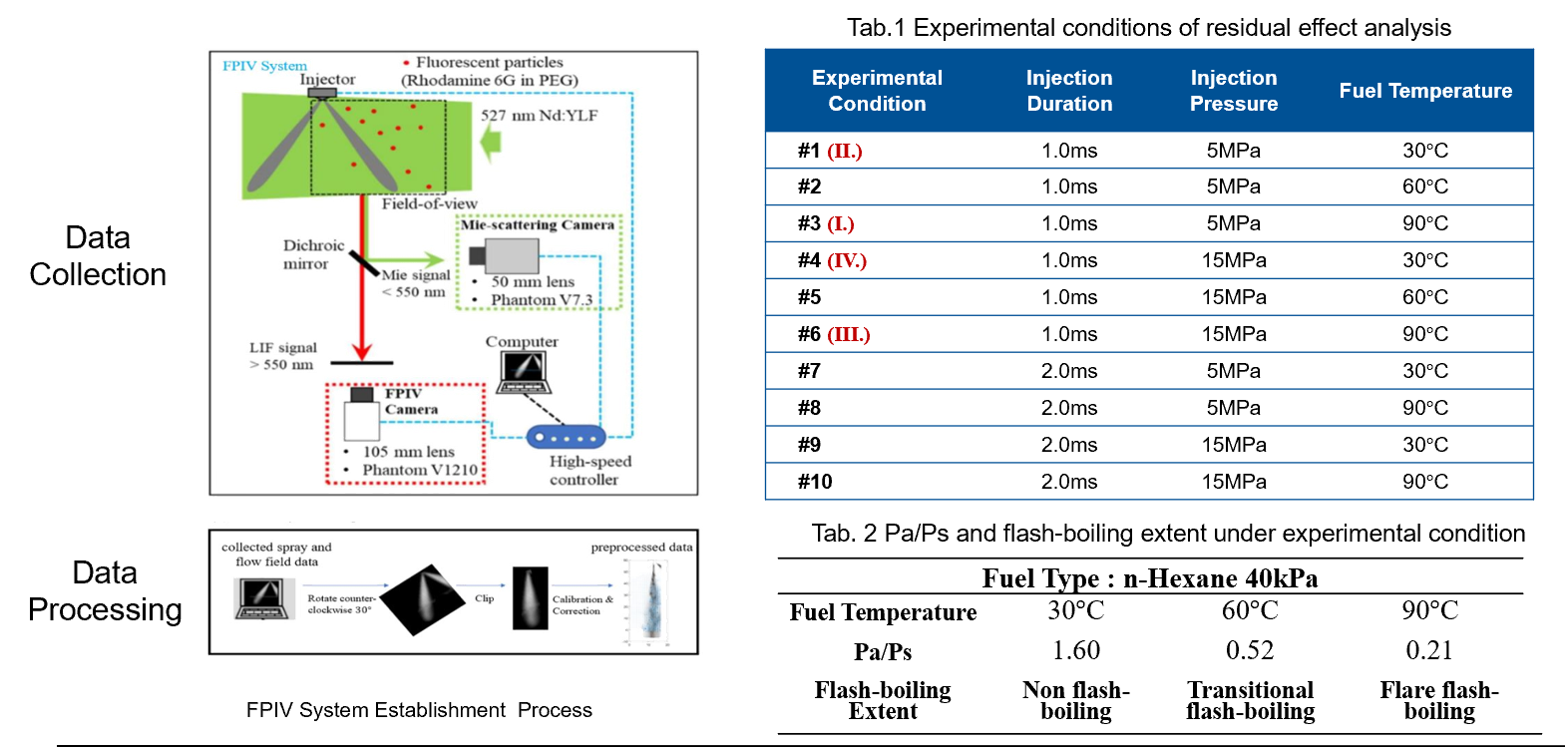
Section 3: Methodology
The methodology section introduces a hybrid analysis approach to investigate the residual effect of spray injection on ambient flow fields. The approach includes three steps: flow similarity measurement, entrainment velocity calculation, and vortex strength detection. Flow similarity measurement is used to assess the similarity of flow field pairs at neighboring time steps to eliminate the inconsistency created by the difference in velocity magnitude. Entrainment velocity calculation provides insights into spray-flow interaction after the end of injection. Finally, vortex strength detection bridges the connection between the spray-flow interaction and the residual effect intensity.
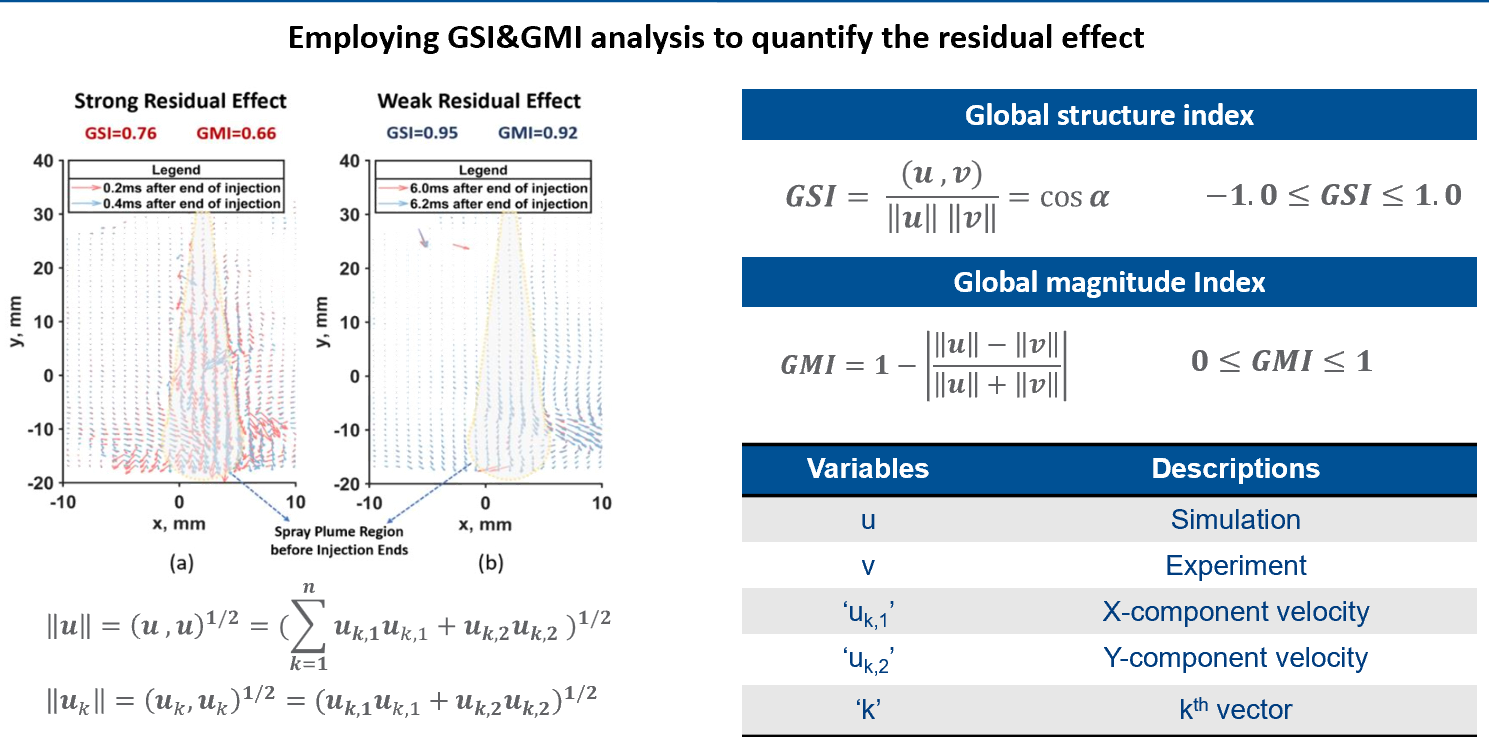
Understanding the vortex interaction process after the injection ends is crucial for comprehensively analyzing the residual effects in the flow field. Vortices play a significant role in shaping the flow patterns and influencing the duration and intensity of residual effects.
In our study, we employed a series of vortex detection and characterization approaches to investigate the vortex dynamics. First, we detected the center of the clockwise vortex using the vortex center index (VCI), which represents the location of the rotation axis of the vortex structure. The signs of VCI and vorticity indicate the vortex direction: positive for counterclockwise rotation and negative for clockwise rotation. To further analyze the strength and size of the vortices, we utilized the Δ criterion to detect the vortex cores. The Δ criterion determines vortex cores based on the complex eigenvalues of the velocity gradient tensor (∇u). This approach eliminates the influence of strong shear motions in the vector field and enhances the accuracy of vortex strength calculation. The vortex strength (Γ) is calculated using the concept of circulation, where ω represents vorticity and S represents the area of the vortex core. Additionally, the radius (r) of the vortex is determined assuming a circular shape for the vortex structures.
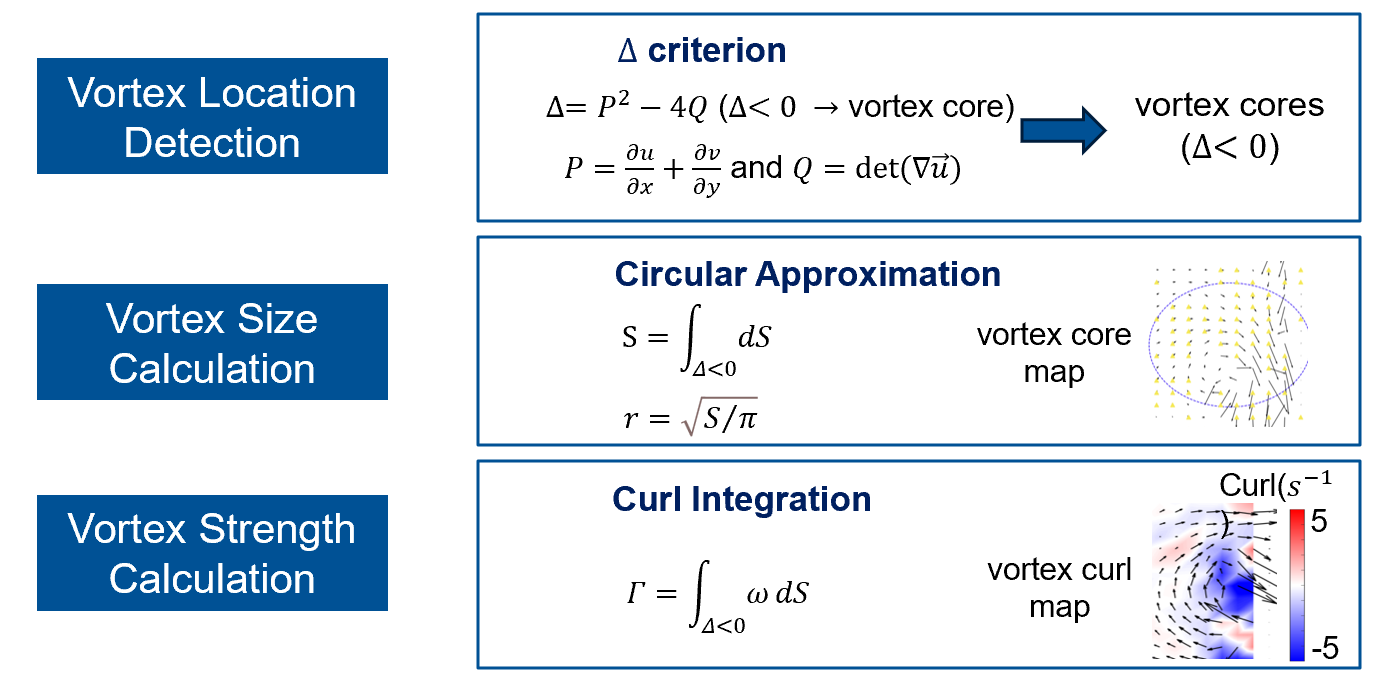
Section 4: Results
The results section presents the findings of the study. The authors investigate the residual effect of spray injection on ambient flow fields under different injection durations, injection pressure, and flash-boiling extent of the spray. They find that the residual effect intensity is influenced by the injection duration, injection pressure, and flash-boiling extent of the spray. The authors also establish a correlation between vortex strength and the endurance of the residual effect.
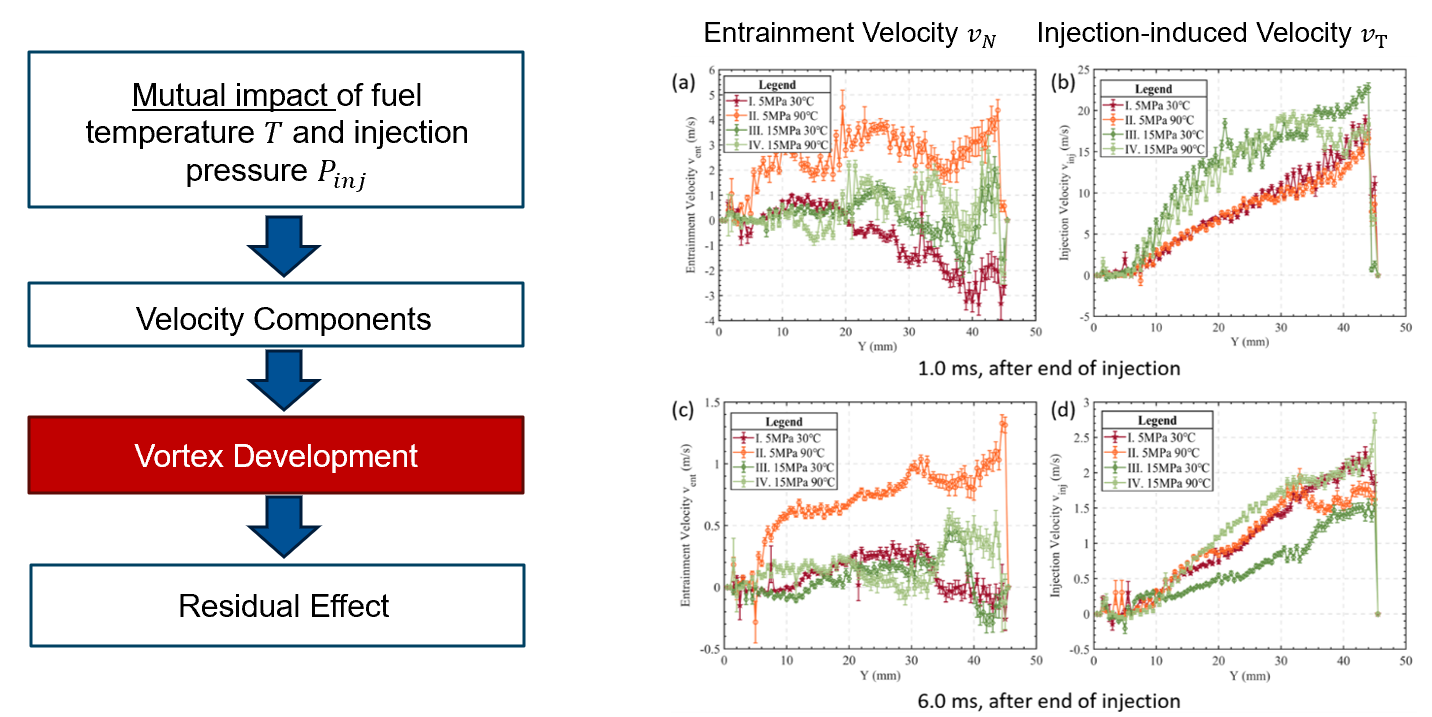
Section 5: Discussion
This work further investigates the influence of vortex behavior on the transient flow field after the end of injection. The analysis reveals that the vortex size and vorticity decrease when either entrainment or injection effect takes the dominant role. The study establishes a connection between different entrainment and injection-induced velocity and the vortex behavior, which ultimately accounts for the duration and intensity of the residual effect.
The findings suggest that the mutual impact of fuel temperature and injection pressure could potentially influence the residual effect. The combination of different injection pressure and fuel temperature results in varying degrees of entrainment as well as injection-induced velocity. The entrainment and injection-induced velocity are not solely dependent on each of the conditional parameters, and their mutual impact could potentially influence the residual effect.
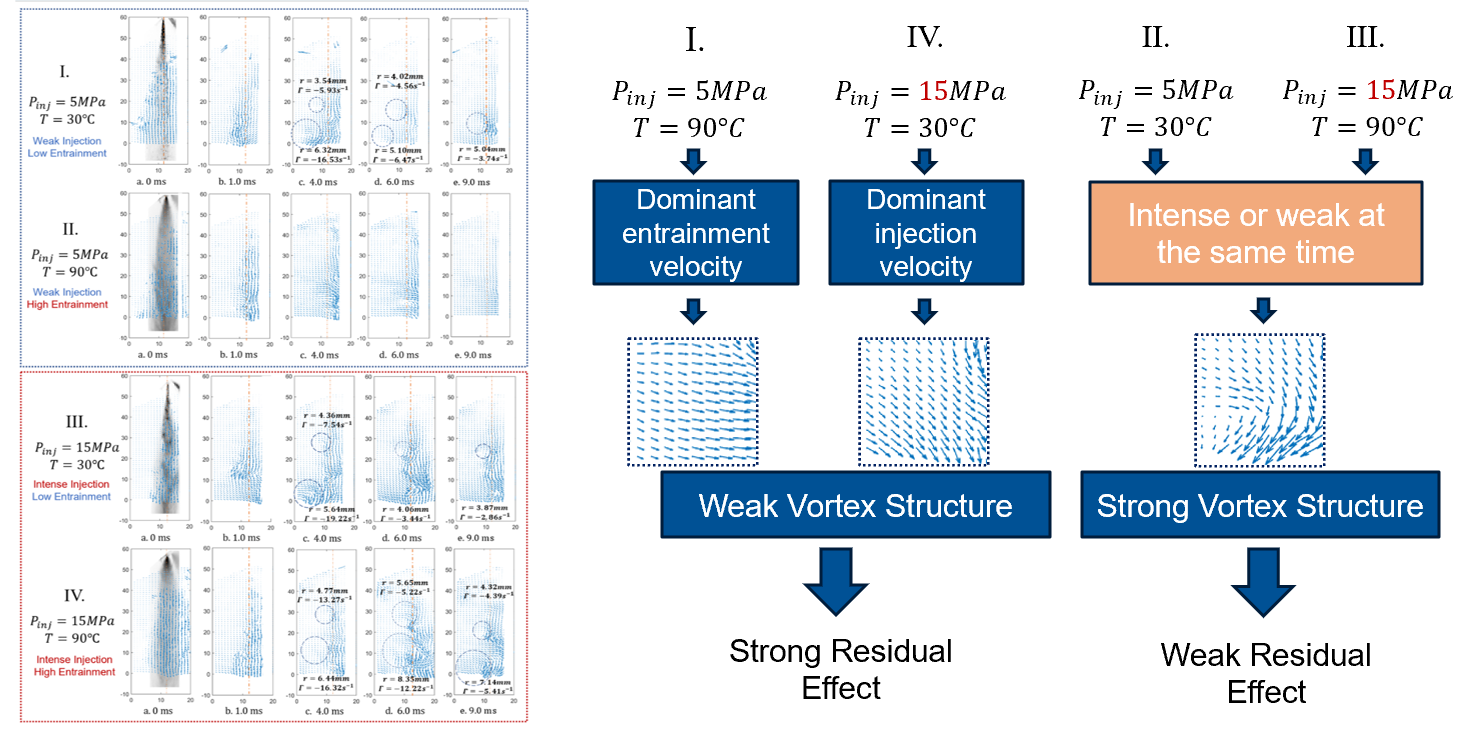
Conclusion
Overall, this study provides valuable insights into the residual effect of spray injection on ambient flow fields and its impact on the air-fuel mixing and combustion processes in GDI engines. The hybrid analysis approach proposed in this study can be used to investigate other cross-media effects on the flow field and investigate the vortex dynamics, contributing to the continuous improvement of engine performance.